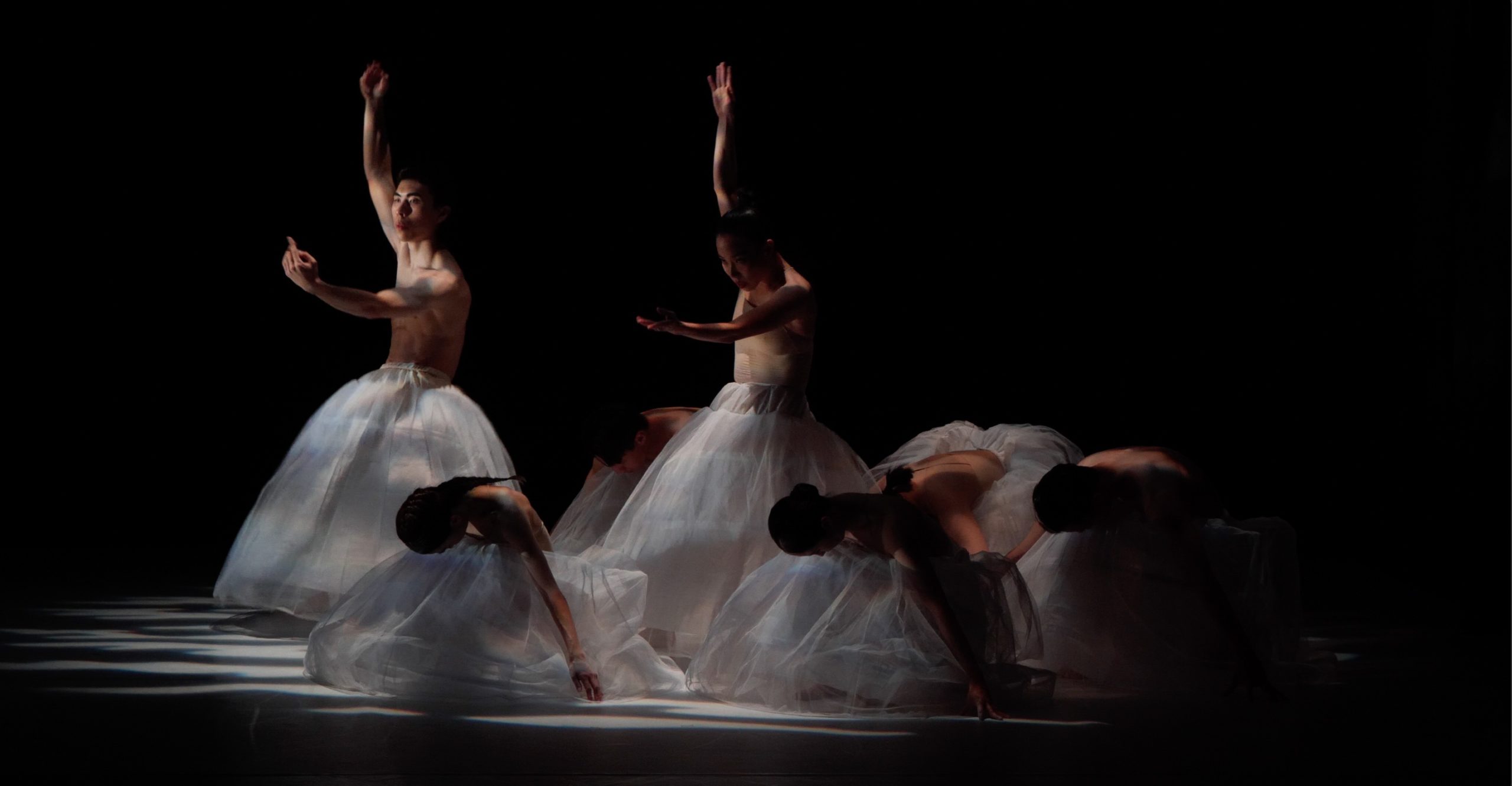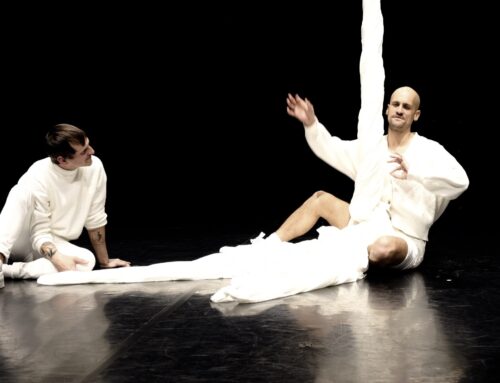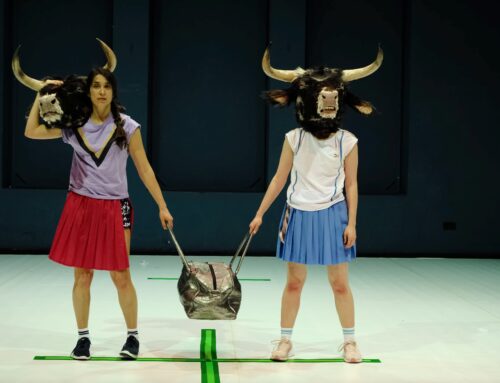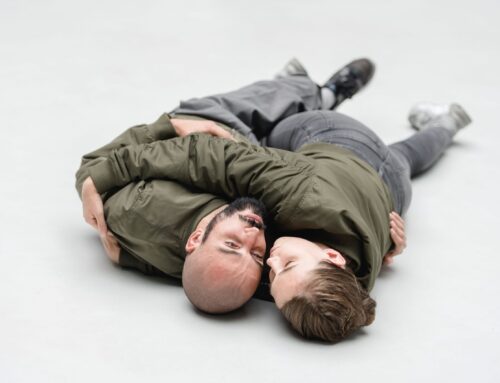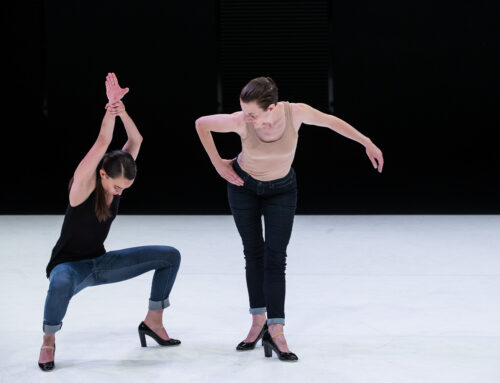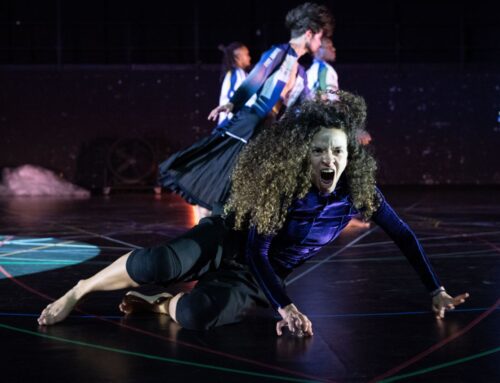schrit_tmacher justDANCE! Festival presents
B.DANCE from Taiwan
Floating Flowers
By Thomas Linden
translated by Karoline Strys
You might think of the often quoted gentleness of Asians when you hear the title „Floating Flowers“ by the B.DANCE Company from Taiwan. Indeed, both women and men dance in white tutus made of delicate muslin and also schrit_tmacher Festival did not want to miss out on the opportunity to use a picture of the production for the cover of its flyer. Yet the production by the young Taiwanese choreographer Po-Cheng Tsai was not gentle at all, rather fulminant, so fulminant that the audience in Stahlbau Strang factory in Aachen gave standing ovations at the final applause.
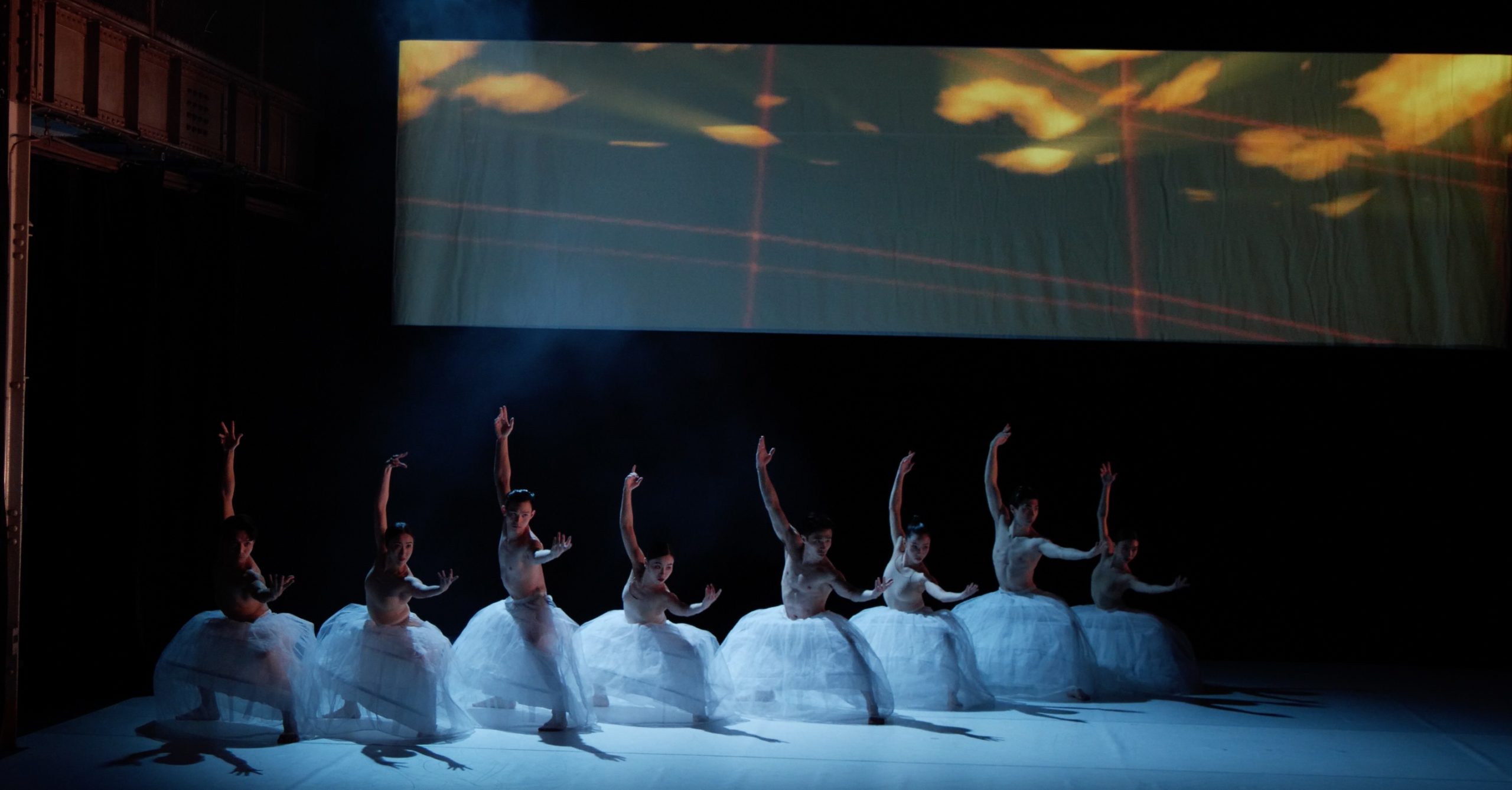
Flowers_B.DANCE©TANZweb.org_Klaus-Dilger
The group from Taiwan deals in a subtle way with nature as central subject. The gossamer white skirts against a black background may look like floating flowers but here it is not just decorative effects, although these are also greatly mastered by the Chinese – right at the beginning the production poses the question of whether we shape our lives ourselves or if life shapes us? For the dance on stage, in which the ensemble – almost unnoticed by the viewer’s eye – changes like a number of water lilies between group images and solo moments, in rapid cuts amorphous shapes can be seen on a screen in the back. Sometimes clouds, then again light reflections on a water surface or shadow formations – they are always forms still in the process of becoming and have not yet found their final destination.
A moment of creation is evoked here, in which the original components of life are already present but the form is still to be found. In a very concrete way, the ensemble relates this process to our inner development when the question is raised on how „personality“ is shaped. Identity is not something you just own but is acquired through experience. Thus, in the final image, when all the dancers line up in front facing the audience, everyone is also allowed to set their own personal characteristic into movement. The choreography does not lack any expressive moments. There is a lot of work with the arms and the upper body. This is the center of the gestures yet the bodies never remain in merely conjuring poses, as can often be seen in Europe, but always stay grounded by the use of the feet, which remains perceptible even when the feet are covered by white muslin.

Flowers_B.DANCE©TANZweb.org_Klaus-Dilger
The most convincing thing about the work of Po-Cheng Tsai and his ensemble is the fusion of classical ballet and contemporary dance. He does not stop at quoting the respective styles. Rather, with his ensemble, he creates something else, giving us an idea of the fruitful expression of the human being that can evolve when both traditions are drawn upon. What works here is what Richard Siegal with his Ballet of Difference always aims at but repeatedly fails to achieve due to a lack of choreographic vision. The repertoire of the western dance tradition of B.DANCE is combined with Asian fighting techniques and ritual movement gestures. The fusion is not always seamless but where it can be elegantly celebrated, one gets an idea of how dance is able to give access to physical gestures that are common to all human beings. With astonishing consistency, B.DANCE returns to the essential moments at the beginning of all time, when movement was still searching for the meaning with which it could become an instrument of communication.
Outrageous speed paired with highest precision is what characterizes this ensemble’s potential. B.DANCE provides virtuosity without losing itself in it or exhibiting it with cold professionalism. The rigor of this group’s aesthetic program is always palpable but so is their passion. What is possible between Europe and Asia, these dancers from Taiwan present us in the most wonderful way.
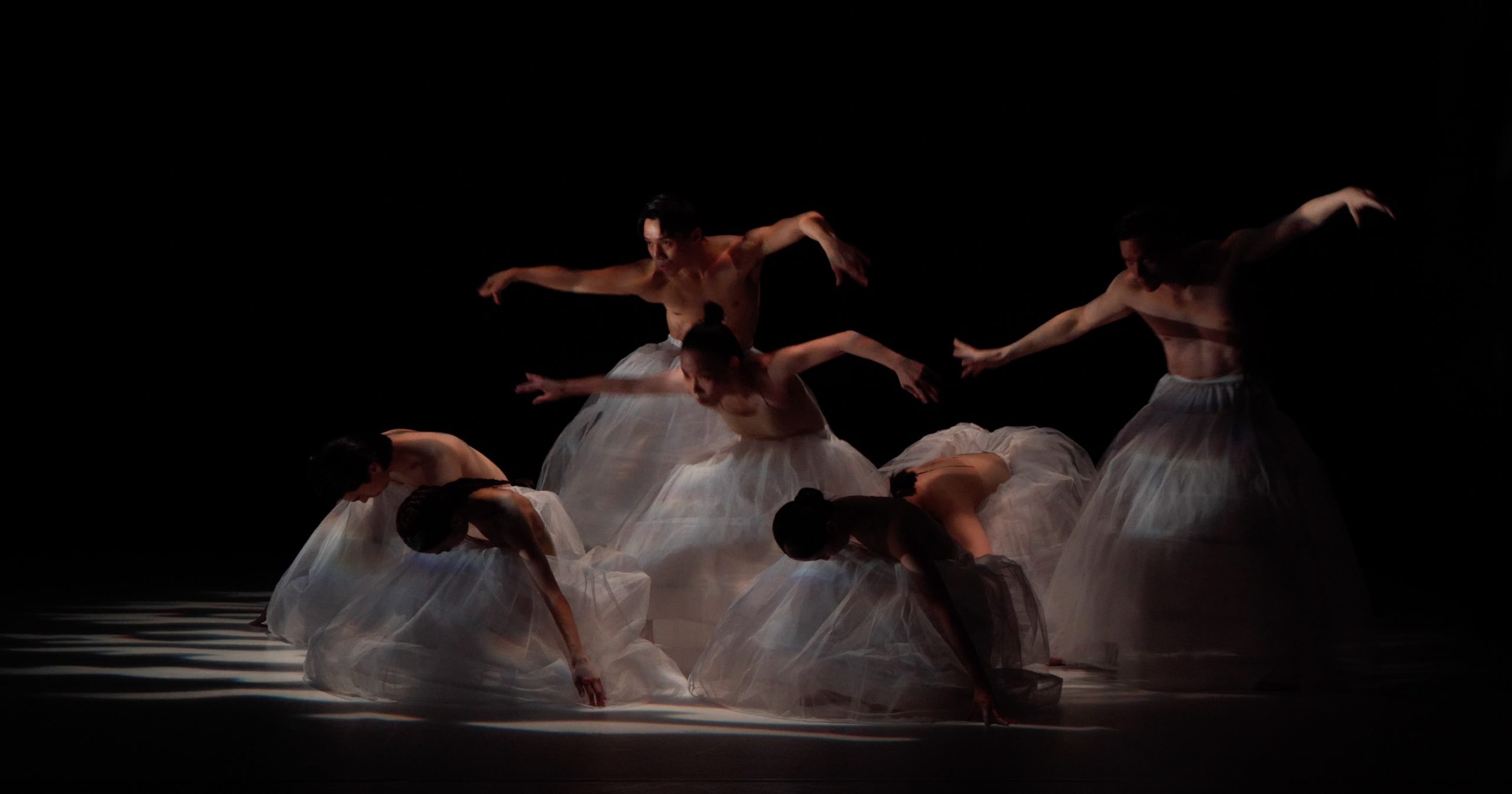
Flowers_B.DANCE©TANZweb.org_Klaus-Dilger

